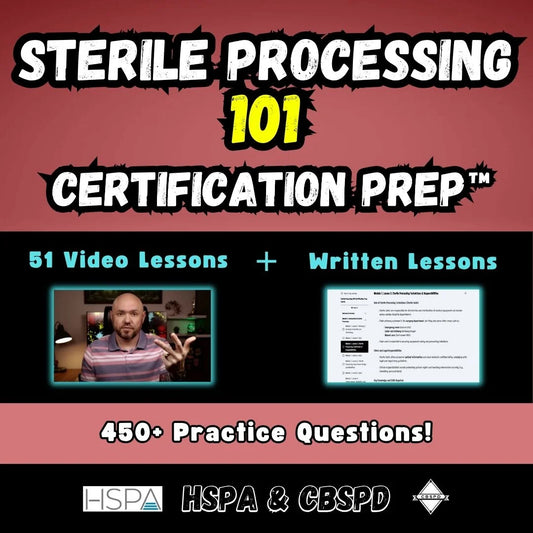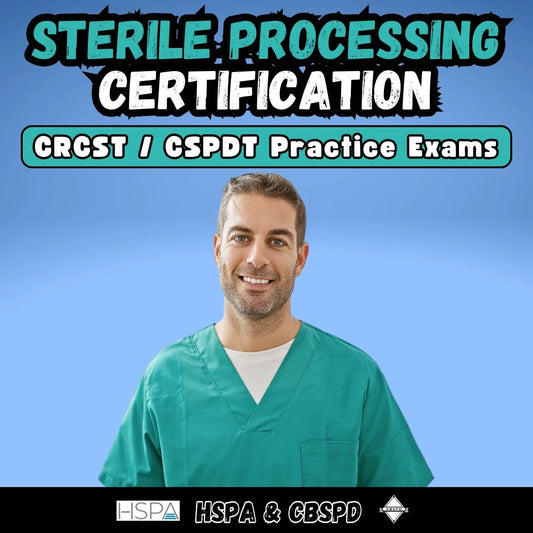Instructions For Use: Chaos or Common Sense

The U.S. Food and Drug Administration (FDA) provides general recommendations for the structure and content of Instructions for Use (IFU) documents for medical devices. IFU’s are an incredibly important and critical component to the field of Sterile Processing. The ability of Sterile Processing Technicians to read and interpret IFU’s is an art and a skill depending on the quality of a manufactures writing practice. While specific requirements may vary depending on the device type and its classification, here are some common elements typically included in IFUs according to FDA guidance:
- Title and Identification: The IFU should have a clear and descriptive title, indicating the name of the device, its model or catalog number, and any specific version or revision information. It should also contain the manufacturer's name, address, and contact information.
- Intended Use: The IFU should clearly state the intended use of the device, including its indications, limitations, and specific patient population or conditions for which it is intended.
- Device Description: Provide a detailed description of the device, including its components, features, and any relevant technical specifications. Include information about any accessories or optional components that may be used in conjunction with the device.
- Instructions for Proper Use: Provide step-by-step instructions for correctly using the device. This should include preparation, assembly, operation, and any necessary maintenance or calibration procedures. Clearly describe any user interfaces, controls, or settings, and provide guidelines for safe and effective device use.
- Safety Information: Include safety precautions, warnings, and contraindications to ensure safe device operation. Highlight any potential risks or hazards associated with device use, as well as instructions for mitigating those risks.
- Cleaning and Sterilization Instructions: If applicable, provide instructions for cleaning, disinfection, and/or sterilization of the device. This should include recommended methods, materials, and any specific requirements or restrictions. (The hope for this section is that a manufacture uses standard sterilization and cleaning processes that are easy to replicate and verify in real time. Manufacturers that create “special parameters” or use non standard equipment setup very difficult situations for Sterile Processing departments.)
- Storage and Transportation: Provide guidelines for proper storage conditions, including temperature, humidity, and any other specific environmental requirements. If the device requires special considerations during transportation or shipping, include instructions to ensure its integrity and safety.
- Troubleshooting and Maintenance: Include information on common issues, troubleshooting steps, and recommendations for maintenance, including routine inspection and servicing.
- Disposal and Environmental Considerations: Provide guidance on proper disposal of the device, including any specific instructions for handling hazardous materials or components. Include information on environmentally responsible practices for device disposal, if applicable.
- Revision History: Maintain a clear record of the IFU's revision history, including dates, version numbers, and a summary of changes made in each revision.
It is important for manufacturers to adhere to FDA guidelines and regulations specific to their device type, classification, and intended use. These recommendations are meant to ensure that IFUs provide comprehensive, accurate, and easily understandable information to users, promoting safe and effective device use.
For specific requirements related to a particular device or situation, I recommend referring to the FDA's regulations, guidance documents, and industry-specific standards. Additionally, consulting with regulatory experts or legal counsel familiar with FDA requirements can provide more precise guidance.
Share
Let customers speak for us
from 241 reviewsI took the practice test and I got a 91% on my certification exam!!
This course was the extra boost that I needed in order be confident in passing the exam. Thank you for all the information provided. I even refer to your notes while working.
Very helpful to me I can study any where at my own pace and low cost than going to school...I'm glad that there is something like this online to help anyone who want to pursue their career as a sterile processing tech.
I loved it, it’s very informative and the questions are great, it’s a great resource to purchase if you want to prepare for your certification exam!
I’ve really enjoyed this course so far. It delivers the information in a straightforward, digestible way. The Sterile Guy has compiled a highly effective program. Thanks very much from one highly satisfied customer!
The practice exams are detailed and easy to navigate. Brandon continues to show his passion in this industry by sharing his knowledge with up-and-coming techs. I also recommend investing in his flashcards. It has helped me greatly. Thank you, Brandon!,
These practice quizzes really helped me get the hang of answering questions related to instruments and the processes of preparing them! I even bought them twice cause I ran out of time lol. Super helpful!
I recently completed the Sterile Processing Guy course online and was extremely impressed. The content was clear, well-organized, and easy to follow. It helped me better understand important concepts like decontamination, disinfection, and sterilization. I appreciated how practical and informative the lessons were, it definitely made studying for certification feel more manageable. I highly recommend this course to anyone pursuing a career in sterile processing!
I won’t lie, I failed the first time around. So I decided to buy this practice test and I passed with flying colors my second go. Highly recommend to anyone interested in the CER, it helped a lot!
The flash card quality is amazing! Bravo sir! The card quality is way above average, questions are great! I’m still learning, utilizing these cards and your practice tests. Thanks for all the info!
I passed the CRCST exam. Taking reg sterile guy practice test over and over definitely helped get the job done.
This certification prep course is a must. Great videos with a lot of information and plenty of of practice exams.
These flashcards are so helpful and well put together. Highly recommend!
I'm really happy that I purchased the SP practice exam. I love how if you answer the question incorrectly, the correct answer will include the page number of the text book to find the answer. The questions are literally based on the textbook. I suggested "The Sterile Processing Guy" to my friend that is studying for the exam as well.








